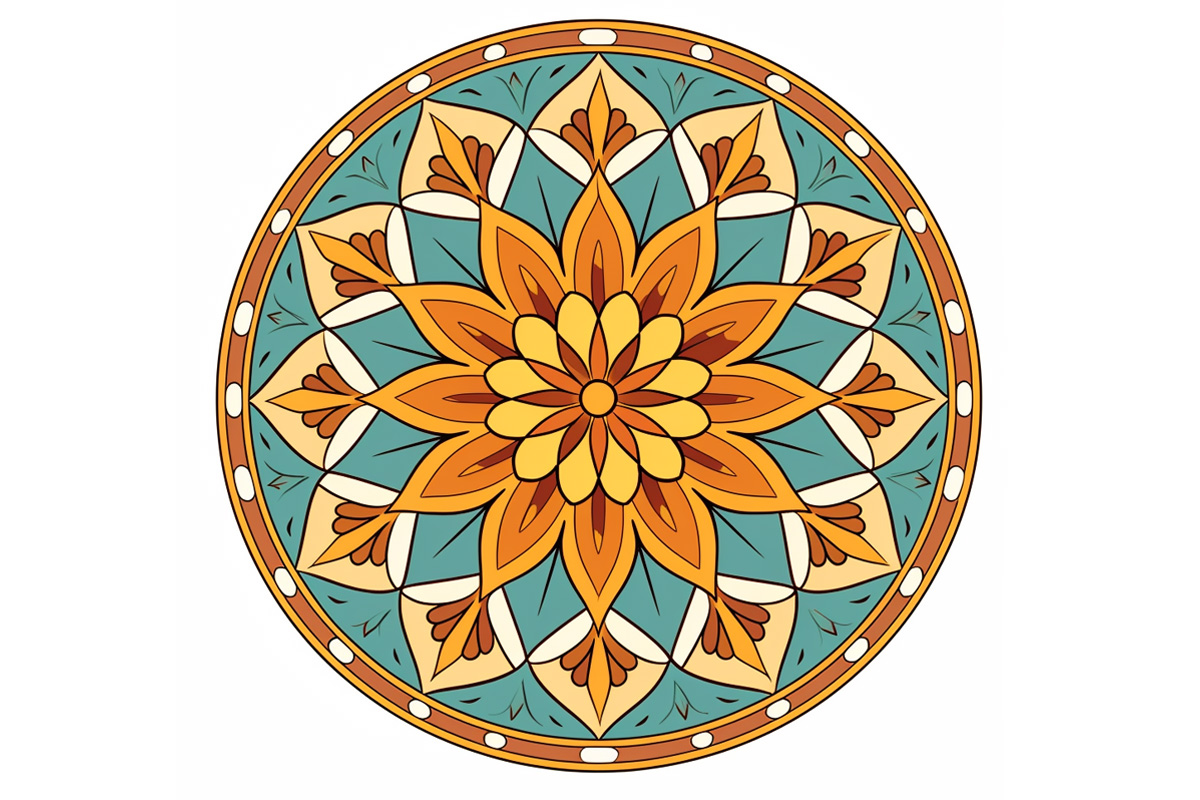Mantra Yoga: A Key to Healing
Mantra Yoga for Healing
Mantra Yoga, a revered ancient practice, is often referred to as the yoga of sound. Rooted in the tradition of utilizing sacred sounds and phrases as spiritual tools, Mantra Yoga transcends cultural and temporal boundaries. As an integrative healing practitioner at Kusala Healing, it’s essential to understand the depth and efficacy of Mantra Yoga, especially when employed to facilitate healing and inner harmony.
To unravel the essence of Mantra Yoga, it’s pivotal to break down the term. ‘Mantra’ stems from the ancient Sanskrit language, where ‘man’ signifies mind, and ‘tra’ denotes protection or tool. Hence, mantras serve as tools to protect and liberate the mind. On the other hand, Yoga translates to ‘union’ or ‘to join.’ Together, Mantra Yoga is the spiritual practice of utilizing sound vibrations to achieve a union between the individual consciousness and the universal consciousness.
Tracing the historical lineage of Mantra Yoga, we find its origins deeply ingrained in the Vedic tradition, where sages and yogis harnessed the power of mantras to attain self-realization. The Vedas, ancient Hindu scriptures, are replete with hymns and chants that were recited to invoke divine energies. These sounds were believed to be infused with the cosmic energies from which the universe was born. Mantra Yoga was, thus, a cornerstone in ancient rituals, meditation practices, and healing ceremonies.
As modern integrative healing draws upon a plethora of traditional practices, the incorporation of Mantra Yoga is only natural. The confluence of Mantra Yoga and integrative healing is rooted in the understanding that sound vibrations can have profound effects on the human psyche and physiology. The chants or mantras are known to create vibrations that resonate with the body’s energy centers or chakras. By aligning these energy centers, it is possible to facilitate healing, release emotional blockages, and promote mental clarity.
Ultimately, Mantra Yoga offers a plethora of benefits, including mental peace, emotional balance, and spiritual growth. By cultivating a focused mind, it helps practitioners to detach from the incessant chatter of thoughts and enter a state of serenity. This state is conducive to self-healing, as it facilitates the body’s natural ability to repair itself. Furthermore, the spiritual aspect of Mantra Yoga cannot be understated, as it empowers individuals to connect with something greater than themselves.
As an integrative healing recipient, understanding and harnessing the power of Mantra Yoga can be immensely beneficial. Through its rich history and potent sounds, Mantra Yoga invites us to embark on a healing journey that is transformative, holistic, and deeply rooted in ancient wisdom.
The Power of Bija Mantras
As practitioners at Kusala Healing, delving into the realm of Mantra Yoga leads us to the discovery of Bija Mantras, the seed syllables. These syllables hold immense vibrational power and are an integral aspect of Mantra Yoga. In this article, we will explore what Bija Mantras are, their historical significance, and the role they play in healing and well-being.
Bija Mantras, often referred to as seed syllables, are single-syllable sounds that, when chanted, create specific vibrational patterns within the body and mind. The term ‘Bija’ translates to ‘seed’ in Sanskrit. Much like a seed that holds the potential to grow into a mighty tree, Bija Mantras are considered to contain the spiritual essence of the universe within them.
The history and significance of Bija Mantras can be traced back to ancient texts and scriptures. They are fundamental in Tantric practices and are considered to be the sound representations of the deities and cosmic forces. These mantras are believed to embody the essential energy of the universe and serve as powerful tools for meditation, concentration, and healing.
There are several Bija Mantras, but the key ones are “Lam”, “Vam”, “Ram”, “Yam”, “Ham”, “Om”, and “Aim”. Each Bija Mantra is associated with a particular chakra, or energy center, within the body.
- “Lam” is connected to the root chakra and helps in grounding.
- “Vam” is associated with the sacral chakra and aids in balancing emotions.
- “Ram” resonates with the solar plexus chakra, promoting confidence and willpower.
- “Yam” is linked to the heart chakra and fosters love and compassion.
- “Ham” corresponds to the throat chakra and encourages communication.
- “Om”, often considered the universal sound, is connected to the third eye and crown chakras, guiding spiritual awareness.
- “Aim” is regarded as the seed syllable of wisdom and creation.
The therapeutic effects of chanting Bija Mantras are manifold. The vibrations created by these syllables can cleanse, balance, and energize the chakras. This, in turn, can have a positive impact on both mental and physical health. For instance, chanting “Lam” can provide a sense of stability and security, while “Yam” can open one’s heart to love and kindness.
Incorporating Bija Mantras into Mantra Yoga practices can significantly enhance the healing process. These seed syllables serve as bridges to higher consciousness, and their vibrations align with the fundamental energies of creation. For those in the field of integrative healing, Bija Mantras can be invaluable tools in promoting holistic wellness and spiritual development for individuals seeking balance and transformation.
David Frawley: An Ayurvedic Pioneer
Within the world of Ayurveda and Vedic sciences, few individuals have made as significant an impact as David Frawley. As a Kusala Healing practitioner, recognizing the valuable insights and contributions of renowned experts like Frawley is essential. In this section, we will explore David Frawley’s life, his invaluable contributions to Ayurveda, and his insights into Mantra Yoga and its healing aspects.
David Frawley, or Vamadeva Shastri as he is also known, is an American author, scholar, and teacher of Ayurveda, Vedic astrology, and Hinduism. His extensive work over the years has earned him a reputation as one of the most prominent Western experts in these fields. Through his numerous books, lectures, and teachings, Frawley has sought to bridge the gap between ancient Vedic wisdom and modern holistic healing practices.
One of Frawley’s groundbreaking contributions is his insights into Mantra Yoga and its healing aspects. He has emphasized the power of sound vibrations, particularly Bija Mantras or seed syllables, in facilitating deep healing and spiritual growth. According to Frawley, the sound vibrations generated through chanting mantras can purify the mind, balance the chakras, and establish a connection with the higher consciousness.
Among his many publications, Mantra Yoga and Primal Sound: Secrets of Seed (Bija) Mantras stands out as a significant contribution. This book serves as a treasure trove for anyone keen on understanding the essence and applications of Bija Mantras. In this publication, Frawley expounds on the use of mantras as powerful sonic instruments that can be harnessed to bring about inner transformation and healing. He elaborates on the different Bija Mantras, their associations with the chakras, and provides practical guidelines on incorporating them into a regular practice.
David Frawley’s role in bridging ancient wisdom with modern holistic healing practices is noteworthy. His work has been instrumental in creating a resurgence of interest in Ayurveda and Vedic sciences in the West. He has been a proponent of a holistic approach to healing that combines the spiritual, psychological, and physical dimensions. This aligns seamlessly with the principles of Kusala Healing, where the emphasis is on an integrative approach to wholeness and well-being.
David Frawley’s pioneering work in Ayurveda and Mantra Yoga offers Kusala Healing’s practitioners and individuals on a healing journey, a wealth of knowledge and practical tools. His elucidation on the use of Bija Mantras as potent instruments of healing and transformation is particularly invaluable. Embracing these age-old wisdoms within modern healing modalities can pave the way for a more profound and holistic approach to integrative health.
Incorporating Mantra Yoga
In the evolving realm of holistic health, incorporating Mantra Yoga can significantly enhance the effectiveness of Kusala Healing’s practices. By integrating ancient wisdom with modern healing modalities, practitioners can provide a more comprehensive approach to wellness. In this last section, we will explore how to effectively incorporate Mantra Yoga, particularly Bija Mantras, into an effective healing practice.
Creating a Mantra Yoga Healing Space
The environment in which Mantra Yoga is practiced can greatly influence its effectiveness. Creating a healing space that is conducive to meditation and reflection is essential. This could include elements such as soothing colors, comfortable seating, and natural elements like plants. Additionally, playing soft, ambient sounds or using aromatic essential oils can further enhance the space.
Chanting Techniques for Bija Mantras
Chanting Bija Mantras involves more than just vocalization. Understanding the correct pronunciation and intonation is crucial. Each Bija Mantra corresponds to different energy centers or chakras within the body. Chanting these mantras at specific frequencies helps to resonate with and balance these chakras. For instance, chanting “Lam” resonates with the root chakra and can be used for grounding, while “Yam” resonates with the heart chakra and can foster compassion and love.
Integrating Mantra Yoga at Kusala Healing
Mantra Yoga can be synergistically combined with other healing modalities such as Integrative Bodywork, Vibrational Sound Therapy, or Ayurvedic therapies. For instance, while performing sound therapy, chanting Bija Mantras can amplify the energy being channeled. Similarly, during hands-on treatments, playing Mantra chants in the background can enhance the therapeutic effects.
Personalizing Mantra Yoga for Healing Goals
Each individual embarking on a healing journey has unique needs and goals. As a Kusala Healing practitioner, it’s important to recognize this diversity and tailor Mantra Yoga practices accordingly. For example, someone dealing with communication issues might benefit from chanting the “Ham” Bija Mantra to open up the throat chakra, while someone seeking spiritual enlightenment might focus on the “Om” mantra.
In conclusion, integrating Mantra Yoga into Kusala Healing practices can provide a powerful and holistic approach to wellness. The sacred sounds of Bija Mantras, in particular, hold immense potential in balancing and aligning energies. By creating a conducive healing space, understanding the nuances of chanting, synergizing with other modalities, and personalizing practices based on individual needs, Kusala Healing can offer an enriched and deeply transformative healing experience.
Interested in exploring more about meditation, integrative bodywork, and sound therapy? Follow Kusala Healing on LinkedIn for regular updates, tips, and insights into integrative healing. Join our supportive community and stay connected with our journey of wholeness and karmic wellbeing!







